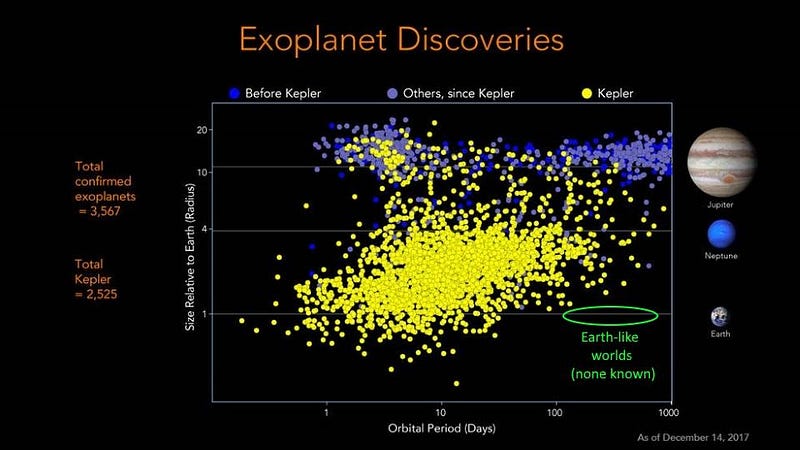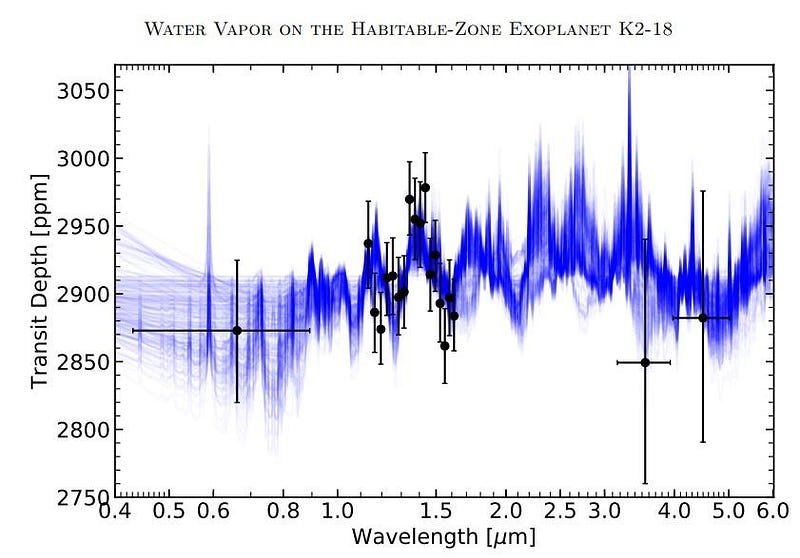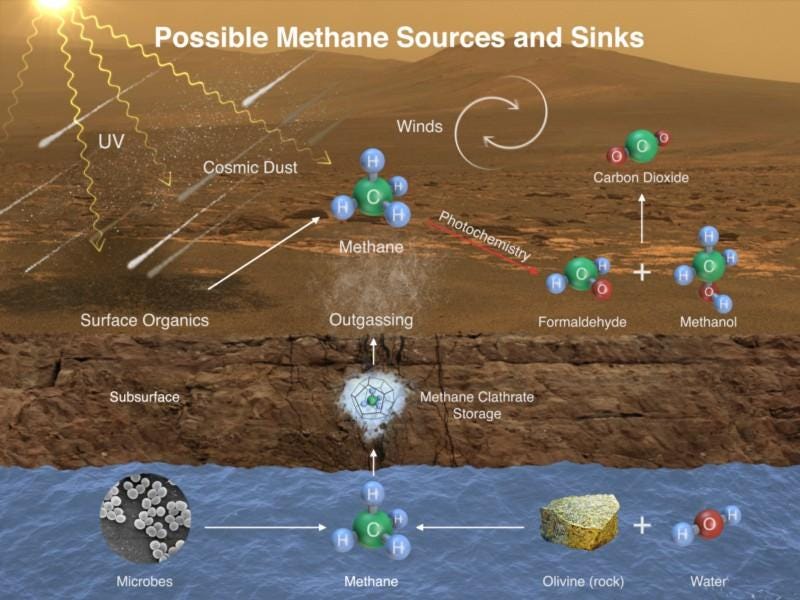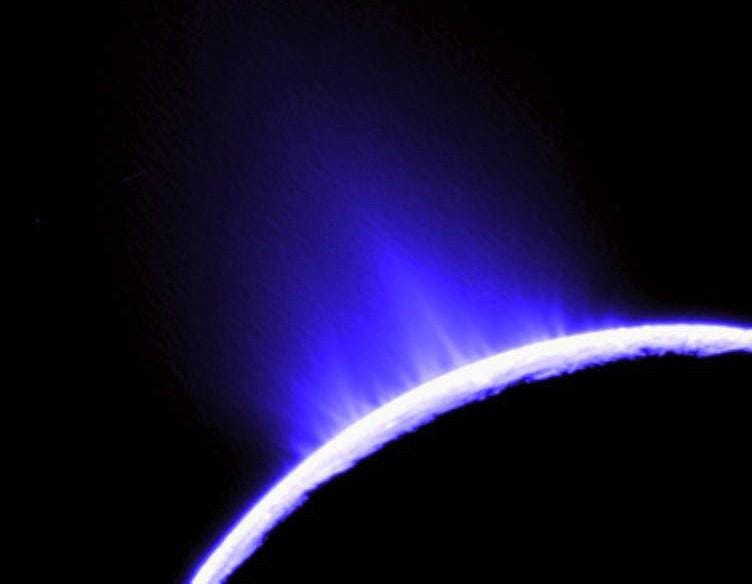Will Alien Life First Be Discovered On Europa, Exoplanets, Or From Extraterrestrials?

There are three possible ways we’ll find alien life. With all of these chances, the only question is which will come first.
Given everything humanity has learned about the Universe, it seems wildly improbable that Earth would be the only planet out there with life on it. Earth is just one of many worlds in our Solar System with a rocky surface, a thin atmosphere, and water — potentially even in the liquid phase — on or beneath its surface. Our Milky Way itself contains hundreds of billions of stars, nearly all of which have planets, some of which may be habitable or even inhabited.
And beyond our Milky Way, there are some two trillion galaxies strewn across the observable Universe. The raw ingredients for life, including the atoms and organic molecules all known biological processes are built from, are found everywhere we look, from inside meteorites to gas clouds in interstellar space to the protoplanetary disks that form new stars. The question shouldn’t be whether there’s life out there in the Universe, but how we’ll first find it.

There are, right now, four ways to search for alien life, ranging from the most passive to the most active.
- Wait for their arrival. Assuming aliens exist, some might be spacefaring and capable of visiting Earth. All we need to do, if we want to explore this option, is to wait.
- Search for signals they’re actively broadcasting right now. If there are intelligent extraterrestrials out there, they could be generating detectable, telltale signatures of their existence. Searching for those signals could reveal them.
- Look for biosignatures directly on other planets. Extraterrestrials that aren’t technologically advanced are likely more common, and if we can uncover their signatures on other worlds through careful and intricate observation, that might reveal extraterrestrial life.
- Look for actual living organisms on worlds we can visit. On the worlds we can observe and measure up close, such as within our Solar System, individual organisms that aren’t descended from Earth-based life would be a revolution.

Even if we include efforts like METI, where humans actively broadcast signals intended to message intelligent extraterrestrials that could potentially receive them, all of the options that rely on purposeful communication or interactions with alien life fall under the same umbrella. Perhaps the alien life we’ll find first is already actively being transmitted (or is traveling through space), and our detection capabilities are almost there. If we get lucky, as some contend we should, we’ll make first contact within our lifetimes.
But despite enormous amounts of data (multiple petabytes) taken in many different wavelengths of light, particularly in a variety of radio bands, there haven’t been any compelling signals detected. Actively searching for extraterrestrial intelligence is like playing the lottery where we don’t know what the odds are. Even if we bought a ticket to every other star system in our galaxy, we might never hit the jackpot.

But two other efforts may find alien life even faster, irrespective of even the existence of intelligent aliens. The explosion of discovered exoplanets — which now exceeds 4,000 and continues to rise — raises the tantalizing possibility that we could examine the surfaces and atmospheres of these worlds (as well as yet-undiscovered ones), determining whether they possess biological activity or not.
As we move from the era of 10-meter class ground-based telescope to 30-meter class telescopes, our resolution and light-gathering power will improve tremendously, enabling the detection and direct imaging of Earth-sized planets around Sun-like stars and smaller. Space-based proposals like HabEx and LUVOIR could use coronagraphs and/or starshades to not only take pictures of those planets directly, but to break their light up into individual wavelengths and measure the changes in that light over time.

If you could take a spectrum of the planet Earth, even from far away, you would notice some extraordinary things. Among other signatures, you’d immediately be able to find:
- that our atmosphere was primarily composed of nitrogen and oxygen,
- with detectable amounts of carbon dioxide, methane, and ozone,
- with hints of ultra-complex, human-created compounds like chlorofluorocarbons,
- and much more.
If there are any other worlds out there that have had life transform their planet’s atmosphere over billions of years, either direct imaging or transit spectroscopy could reveal them. So long as you can break the light from a planet’s atmosphere into its individual wavelengths, this type of data can be turned into a crude “molecule map” of the atmosphere’s composition.

In addition to spectroscopy, an inhabited planet would offer simple clues to biological activity even if it took up only a single pixel in a detector. If the planet had variable and partial cloud-cover, we’d be able to detect that. If it had continents and oceans, the planet’s rotation and colors would reveal that. If it greened-and-browned with the seasons, or had icecaps grown and recede as the planet orbited its star, even crude direct imaging could show this to us.
And just as Earth emits its own non-natural light at night, a sensitive enough instrument might be able to detect the artificial illumination of a nighttime civilization. What serves as mere light pollution on our world today could be a beacon to a sufficiently curious and sufficiently advanced aliens species that was looking for us. As the 21st century unfolds, our detection capabilities may increase to make this possibility a reality.

But direct contact with extraterrestrials and finding bio-signatures (or, perhaps more accurately, bio-hints) around exoplanets are only two of the three main possibilities for discovering alien life. The closest one to home, and the third major contender in the race, is to look for bona fide biological organisms thriving on other worlds in our Solar System.
Although there are a number of possibilities for bringing this search to fruition, they fall into three classes:
- Life in an atmosphere, such as on Venus, where conditions at an altitude of ~60 miles are approximately the same temperature, pH, and atmospheric pressure as they are at Earth’s surface.
- Life on a rocky world’s surface, either with subterranean or transient liquid water (like on Mars) or with pools of liquid (like methane provides on Titan) directly on the surface.
- Or life emerging in the liquid ocean that lives beneath the frozen surface of one of many candidate worlds: Europa, Enceladus, Triton, Pluto, etc.

Unlike the other possibilities, the close proximity of these worlds means that we can send space probes — or if resources allow, a crewed mission — capable of directly finding living organisms on another world. In the cloudtops of Venus, single-celled life could be thriving in what are conditions very similar to those where bacteria are known to thrive on Earth.
On the surface of Mars, a strange signature of seasonal methane bursts have been seen periodically. While the most common (and mundane) explanation is that this is simply a geochemical process, where methane is emitted owing to some combination of sub-surface chemicals interacting in a seasonally periodic fashion, it’s also possible for some biological, organic process to cause these methane outbursts. NASA’s Mars 2020 mission, scheduled to launch in July and land in 2021, should be able to determine the nature of this suggestive compound.

But perhaps the most fascinating possibility of all is that a world with a large, deep, salty sub-surface ocean — particularly in orbit around a massive, gas giant planet that can provide internal heating due to its tides — harbors some sort of life in its vast ocean. The ingredients for life are all there, including a heat source, an aqueous environment, the right atoms and molecules, lots of time, and no dealbreakers in terms of unstable temperature or ionizing radiation.
Jupiter’s Europa contains an enormous amount of water and has cracks on its surface that indicate some type of transport between the icy surface and the liquid interior, and will see the Clipper mission visit it later this decade. Some scientists are incredibly optimistic about this possibility. Enceladus, Saturn’s icy, geyser-rich moon, could even potentially be spewing biological organisms into plumes that rise more than 300 kilometers off of its surface.

If it exists on a world in our Solar System, like Mars or Europa, we’ll finally be sending space probes with the capability of finding those biosignatures. If life exists and has thrived for a long time on a nearby exoplanets, direct imaging or transit spectroscopy could reveal hints or even surefire evidence of that planetary transformation. And if intelligent aliens are trying to contact us, we’re better positioned to pick up those beacons than ever before.
For as long as humans have existed, we’ve wondered whether life on Earth is all there is and if we’re alone in the Universe, or if other life forms exist on worlds beyond our own planet. As the 2020s dawns, we have better prospects than ever for discovering life on all three possible fronts. With billions of potentially inhabited worlds in our galaxy alone, even if life is relatively rare, we’re still in great position to detect what scant life does exist. Arguably, the biggest question isn’t whether we’re alone or not, but rather how and where we’ll find our first evidence for life beyond Earth.
Ethan Siegel is the author of Beyond the Galaxy and Treknology. You can pre-order his third book, currently in development: the Encyclopaedia Cosmologica.





